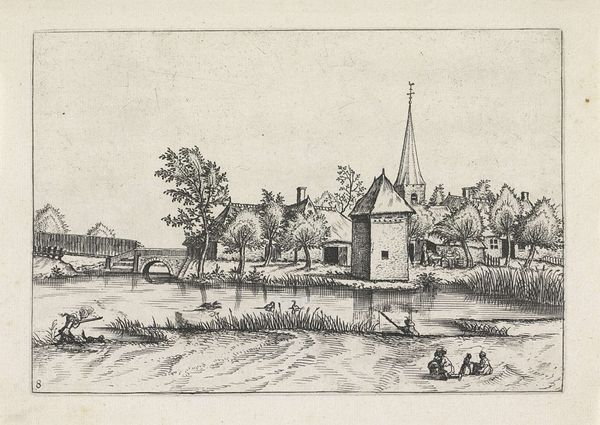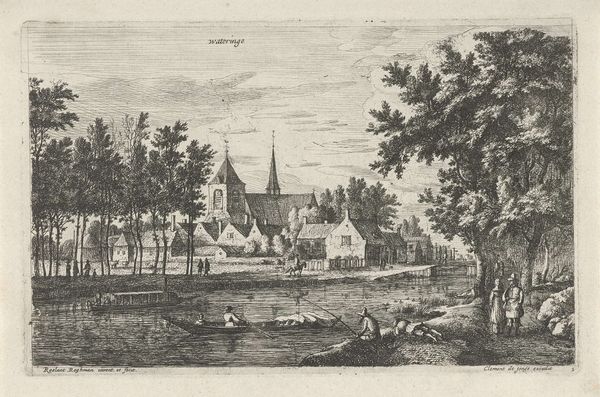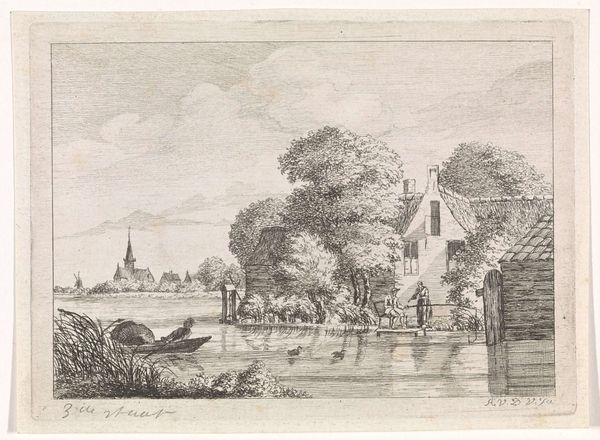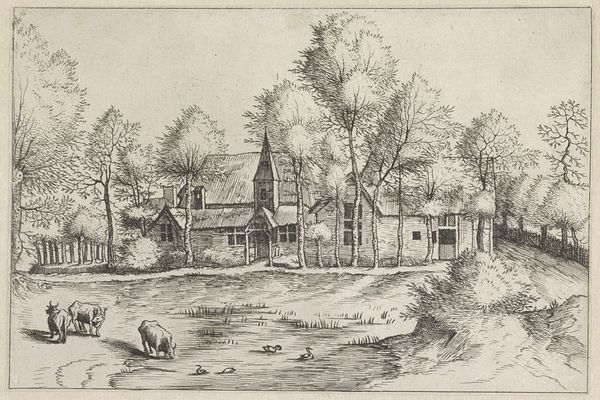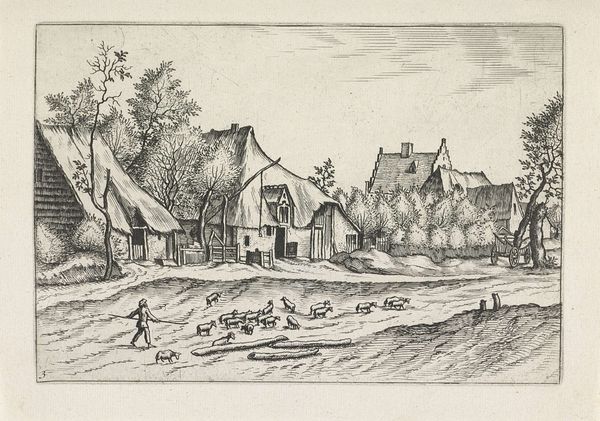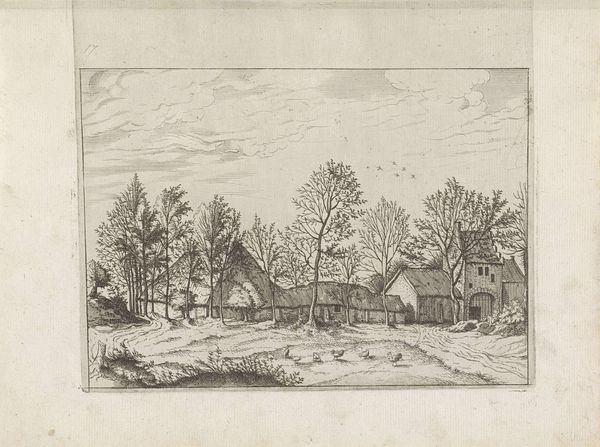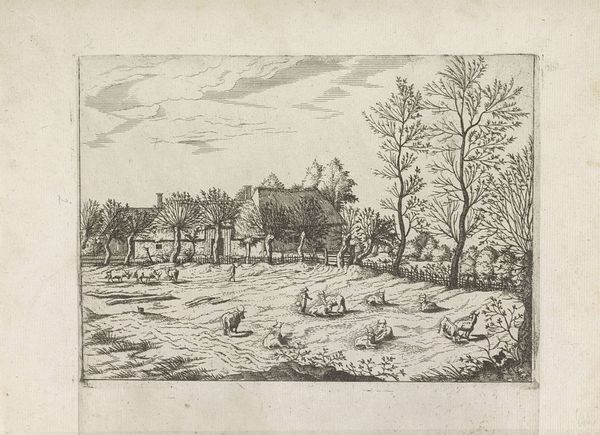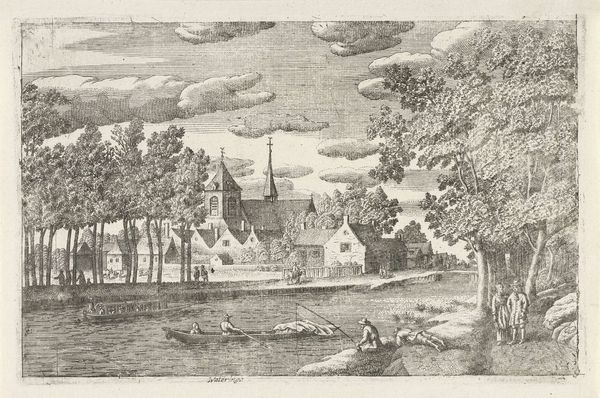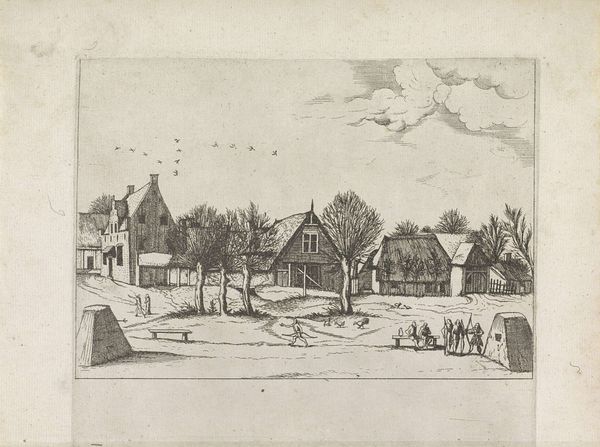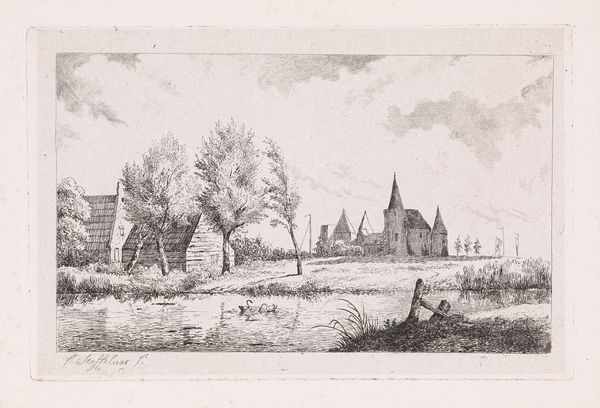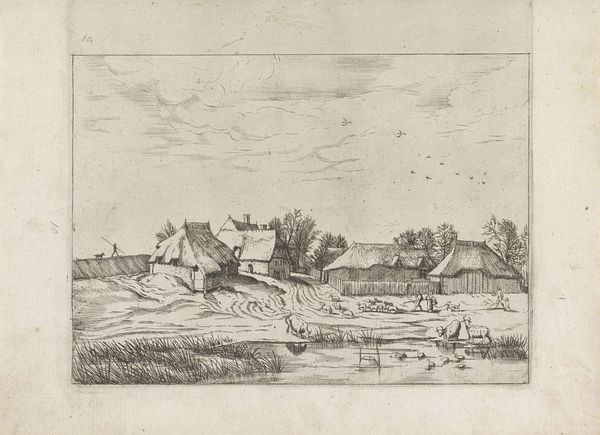
drawing, print, engraving
#
drawing
#
aged paper
#
light pencil work
#
quirky sketch
# print
#
pencil sketch
#
sketch book
#
landscape
#
personal sketchbook
#
sketchwork
#
sketchbook drawing
#
genre-painting
#
history-painting
#
storyboard and sketchbook work
#
northern-renaissance
#
sketchbook art
#
engraving
#
realism
Dimensions: height 164 mm, width 201 mm
Copyright: Rijks Museum: Open Domain
Curator: This engraving, titled "Landschap met boerderij en houthakkers," or "Landscape with farm and woodcutters" was created between 1559 and 1561 by Johannes or Lucas van Doetechum. What's your initial impression? Editor: Stark, in a way. The bare trees, the bleached light... there's a vulnerability, like seeing a moment of toil caught in a harsh winter. But there’s a subtle sense of rhythm, the human rhythm in the sawing, the wind through the skeletal trees, a certain hard-won music in labour and in surviving in those days. Curator: The rhythm is key. Consider how the lines almost vibrate with activity. It's interesting to observe the cultural context—Northern Renaissance artists often used landscapes to subtly embed moral or allegorical tales. Do you find a story here? Editor: Absolutely, that period loved symbolism. Woodcutters were a symbol of honest labour and living close to nature, but chopping wood might carry an older, heavier significance too: sacrifice, transformation. The starkness combined with all of those roofs evoke, I suppose, what many still might experience now in villages today; that simultaneous experience of familiarity, community, and vulnerability. Curator: The thatched roofs dominating the composition could signify protection or a simple domesticity, wouldn’t you say? A cultural identity rooted in place, maybe? Editor: Precisely! Look at the way they loom large—shelter and continuity. The way we are held by images. Even something like the gathering of timber—preparations being made and winter impending-- can mean resilience too. It feels deeply archetypal, resonating far beyond its specific time and place. Curator: I’d agree! It reminds us that these very old scenes have layers of symbolic weight to unpack still, layers about us! A surprisingly relatable view from so long ago.
Comments
No comments
Be the first to comment and join the conversation on the ultimate creative platform.
